Cars
Alternate Accelerator
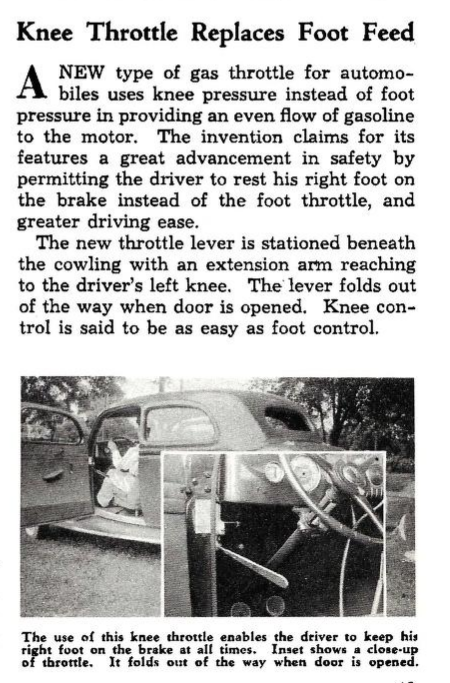
Is one's knee action as forceful, subtle and easy to control as foot action?
Source.
Posted By: Paul - Thu Jun 03, 2021 -
Comments (5)
Category: Death, Inventions, 1930s, Cars
Dodge La Femme
1955: Chrysler introduced the Dodge La Femme, a two-door, pink-and-white sedan "for the discriminating modern woman".
source: DodgeLaFemme.com
In an attempt to make the car irresistible to women, Dodge also threw in a pink leather handbag that contained "cigarette lighter and case, compact, lipstick and other feminine items covered in matching pink leather." Plus, "a vinyl raincoat and stylish sou'wester hat, printed in the same pink shade and pattern as the Jacquard upholstery." And a matching pink umbrella!
But even with all this, the car failed to appeal to consumers. However, because fewer than 2500 of them were ever made, the car is now sought after by collectors.
More info: wikipedia

St. Louis Post-Dispatch - Apr 10, 1955
Posted By: Alex - Sat Apr 03, 2021 -
Comments (3)
Category: Gender, Women, 1950s, Cars
Getaway
Getaway, by Ronald George Eriksen 2 (is the '2' an alternative form of Jr.?), offers instruction on evasive driving techniques. Or, as he says, how to handle a car in the event that someone tries to kill or kidnap you while you're in the car. It was published by Loompanics in 1983, but you can read it for free at archive.org.
In it, you'll find tips such as how to make a smoke screen blow out of your exhaust:
Also, how to do a bootlegger's turn:
(2) Get off the gas and crank the steering wheel to the left ¼ to ½ of a full turn. At the exact same time, hit the emergency brake hard. Those of you with manual transmissions will have to depress the clutch, also.
(3) When your vehicle is at approximately 90 degrees, release the emergency brake, step on the gas, and straighten out the steering wheel. If you have a manual transmission, you will have to let the clutch back out as you are hitting the gas.
(4) Get out of the area fast.

Bootlegger's Turn
Posted By: Alex - Wed Feb 24, 2021 -
Comments (5)
Category: Motor Vehicles, Cars, Books
Morse Code for Drivers
In 1960, the Automobile Legal Association proposed that all drivers should learn a code that would allow them to communicate with each other on the road via honks.One short honk would mean, 'Left blinker going'. Three short honks would mean, 'A light burned out'. One long honk would mean, 'Get over in the right lane.' And so on.

The Terre Haute Star - Sep 17, 1960
Although the honking code never caught on, the idea of allowing drivers to communicate with each other has persisted. The 21st-century spin on it are the various phone apps (such as bump.com, Driver Talk, or PL8chat) that allow you to send messages to other cars by entering their license plate number. Of course, both drivers have to be signed up with the app for this to work. Which means these apps have, for now, very limited practical use.
Posted By: Alex - Mon Feb 15, 2021 -
Comments (3)
Category: Languages, Cars
American Look
Your head will be spinning with Midcentury Modern designs by the end of this film. A Utopia that never was.
Posted By: Paul - Wed Feb 03, 2021 -
Comments (1)
Category: Business, Design and Designers, Recreation, Interior Decorating, 1950s, Cars, Yesterday’s Tomorrows
Whistling Accelerators
Accelerators have inspired a number of weird inventions. For example, a few years ago we posted about the "Deaccelerator" which was a device that aimed to prevent speeding by making it harder to depress the pedal in your car once you reached a pre-set speed (usually 50 mph).We've also posted about an effort to replace the accelerator with a pedal. The faster the driver pedaled, the faster the car would go. This was designed to give drivers some exercise as they commuted to work.
And yet another odd accelerator invention is the whistling accelerator. The idea is that if the accelerator is depressed too rapidly it will produce an annoying whistle. This will remind the driver not to accelerate too quickly, thereby saving gas.
The idea for a noise-making accelerator goes back to a 1958 patent granted to Philip Kershman of Los Angeles. He had rigged up an accelerator so that it would ring a bell if depressed too quickly.
Eighteen years later, in 1976, Henry Merriman of Michigan simplified this idea by replacing the bell with a whistle. He basically took a squeeze toy and attached it to the underside of the accelerator.

Merriman's squawking accelerator
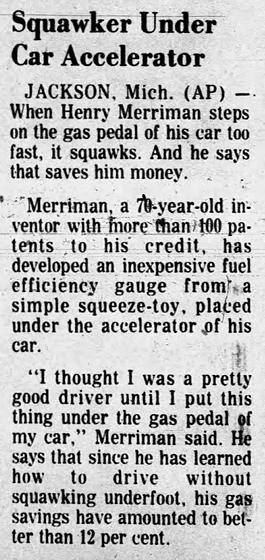
St. Joseph News-Press/Gazette - Apr 30, 1975
Another whistling accelerator was patented in 2012. Its design was more sophisticated, but it was overall the same idea — accelerate too quickly and the thing starts whistling. The patentees described it as a "vehicle fuel efficiency monitor and signalling device".
Personally, I'm content to drive without any bells or whistles attached to the accelerator.

Posted By: Alex - Wed Jan 20, 2021 -
Comments (0)
Category: Inventions, Patents, Cars, Cacophony, Dissonance, White Noise and Other Sonic Assaults
Radioactive Spark Plugs
Firestone came out with radioactive spark plugs in 1940. The idea was that radioactive material (polonium) would improve the electrical conductivity of the spark plugs, resulting in better fuel combustion. More details from the Health Physics Historical Instrumentation Museum: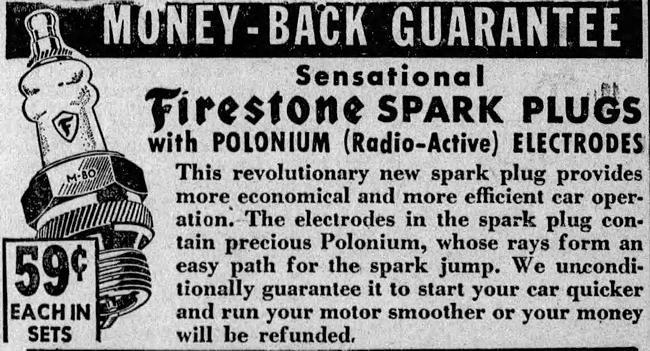
Monrovia News-Post - Mar 27, 1941
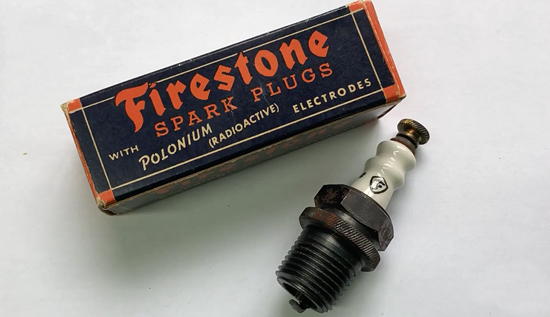
Posted By: Alex - Wed Jan 13, 2021 -
Comments (2)
Category: Atomic Power and Other Nuclear Matters, 1940s, Cars
The Aeolus Wind Car Competition
The event got cancelled in 2020, but plans to resume this year.Forty seconds of narration in French preface this second video.
Posted By: Paul - Sun Jan 10, 2021 -
Comments (2)
Category: Contests, Races and Other Competitions, Technology, Environmentalism and Ecology, Cars
The Spare Tire Cover as Advertising Medium
The earliest surviving instances of this mode of advertising seem to be really rare. If any WU-vie can find more examples, that would be great!Of course, nowadays you can have custom-designed spare tire covers at the drop of a hat!
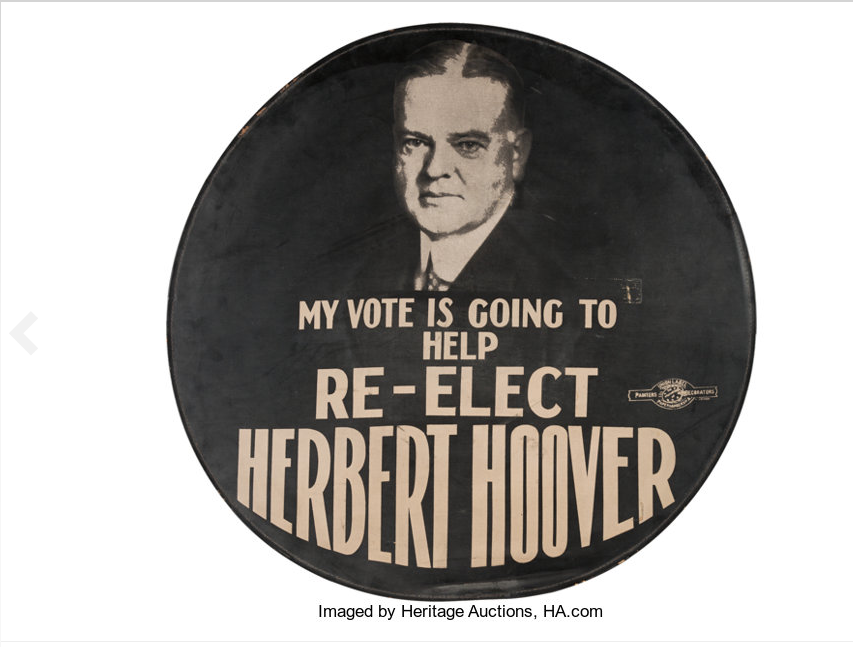
Source.
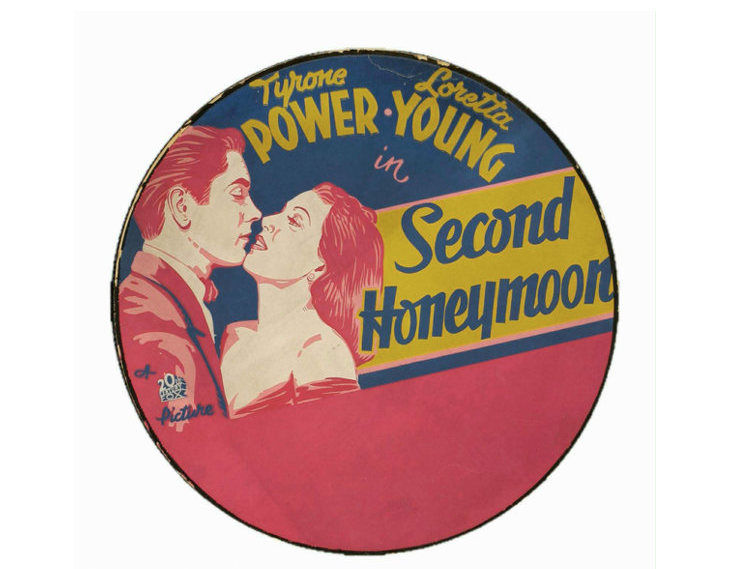
Second Honeymoon (20th Century Fox, 1937). Spare Tire Cover. Throughout the thirties the studios would offer in their pressbooks what were spare tire covers that would advertise their upcoming feature. This silkscreen cover for the Tyrone Power and Loretta Young romance has elastic bands in back which allow it slip right over the tire that was always visible on the back of the automobiles of that time. Probably the theater owner, ushers, or cab companies would be paid to use these. Very interesting novelty that are often seen in pressbooks but few have survived.
Source.
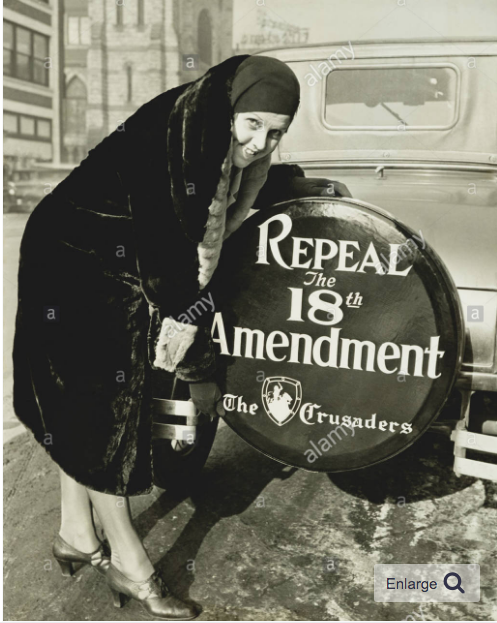
Source.
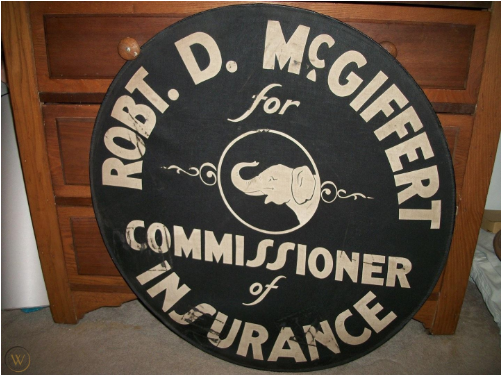
Source.
Posted By: Paul - Thu Nov 05, 2020 -
Comments (3)
Category: Advertising, 1930s, Cars
Carl Bohland’s Auto Wash Bowl
Carl Bohland patented the auto wash bowl in 1921. His idea was that cars would drive into a large, concrete bowl filled with water. After a couple of times around the bowl, the cars would be clean. Or, at least, cleaner.

Bohland managed to open a few auto wash bowls. The problem, however, was that his technique only really cleaned the underside of the cars. This was useful back in the days when many roads were still unpaved and their undersides constantly got filthy. But as road conditions improved, the auto wash bowl became less useful. By the 1930s, the last one had closed.
More info: vintag.es
Posted By: Alex - Sun Oct 11, 2020 -
Comments (5)
Category: Inventions, Patents, 1920s, Cars

| Who We Are |
|---|
| Alex Boese Alex is the creator and curator of the Museum of Hoaxes. He's also the author of various weird, non-fiction, science-themed books such as Elephants on Acid and Psychedelic Apes. Paul Di Filippo Paul has been paid to put weird ideas into fictional form for over thirty years, in his career as a noted science fiction writer. He has recently begun blogging on many curious topics with three fellow writers at The Inferior 4+1. Contact Us |




